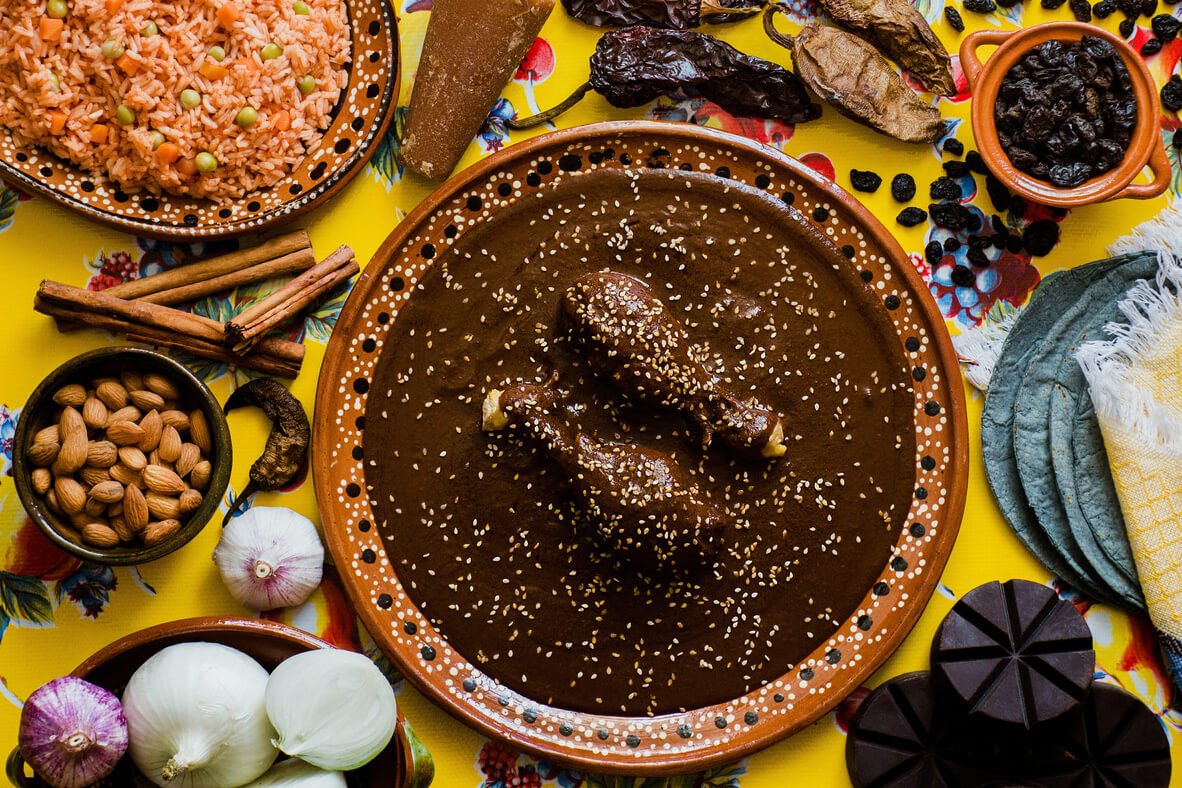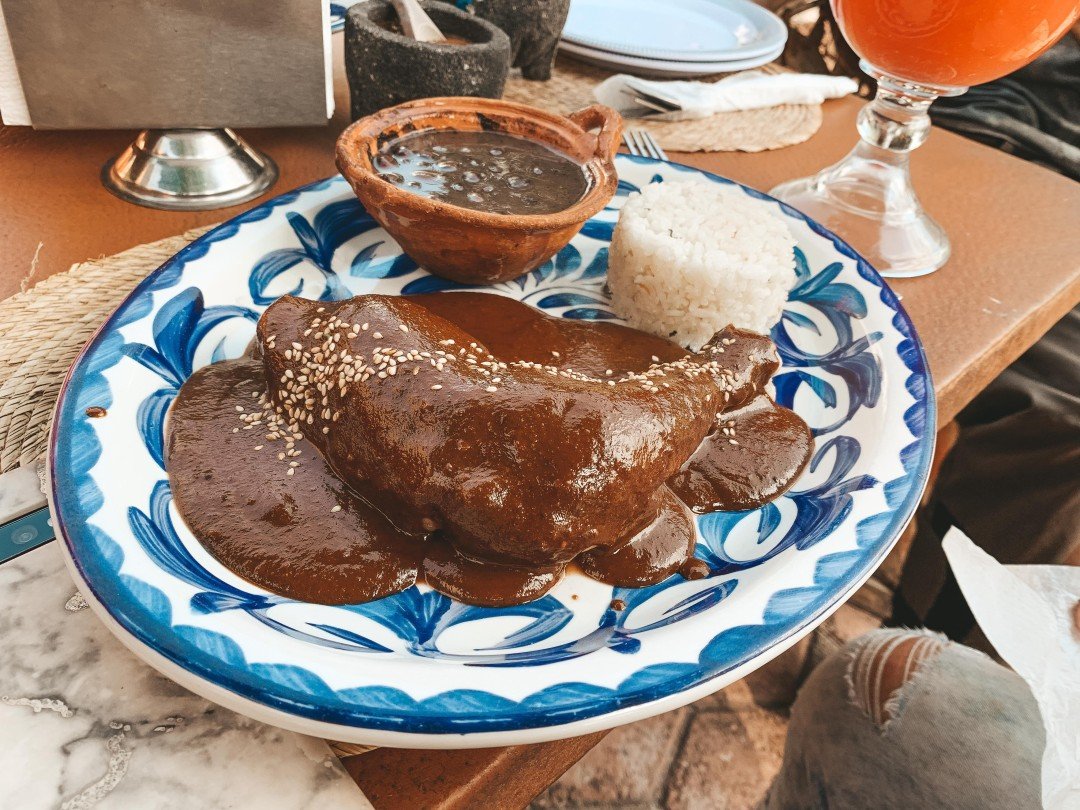A Symphony of Flavors: Dive into the Exquisite Realm of Mexican Mole
Discover > Home Cooking > A Symphony of Flavors: Dive into the Exquisite Realm of Mexican Mole
Introduction
The Mexican Mole. A lot of us Texans are familiar with this wonderfully flavorful dish from across the border. I even remember that one family restaurant down our street that served the best mole poblano you could find in Austin, Texas.
We went there quite often and even found out that their recipe comes from three generations of mole-making tradition - where the cook in each generation innovated the recipe and added their own dishes and own personal touches.
When it comes to the vibrant tapestry of Tex-Mex and Mexican cuisine, one dish stands out as a true masterpiece: Mexican mole. Bursting with complex flavors and a rich history, mole has become an iconic dish and symbol of Mexican gastronomy.
In this article, we embark on a culinary journey to explore the origins, recipes, ingredients, and enchanting flavors of this delectable sauce. Get ready to tantalize your taste buds and discover why mole this sauce is hailed as a symphony of flavors.
Unveiling the Origins
Mole has a fascinating history and origin that intertwines with the cultural heritage of Mexico. The history and origin story of mole is highly contested across different places. There are accounts of Spanish settlers in Mexico who witnessed Aztecs enjoying this dish when they arrived.
There's also a legend about mole poblano, one of the most renowned varieties, originated in the 17th century in the Santa Rosa Convent in Puebla. The nuns of the convent creatively mixed various ingredients, such as chili peppers, chocolate, spices, fruits and nuts (how long do nuts last?), to craft a sauce fit for a special occasion.
Over time, mole evolved and diversified, giving rise to a captivating array of flavors and regional variations like mole rojo, yellow mole, and black mole. Whatever you may fancy, mole has survived the test of time and has transformed to a dish that we all know and love from both sides of the border.
A Kaleidoscope of Ingredients
At the heart of mole lies a captivating blend of ingredients. Mole sauce itself is a complex concoction, typically featuring a combination of chili peppers, chocolate, garlic, onions, tomato and a medley of spices.
Each type of mole has its unique twist, whether it's the vibrant green mole with pumpkin seeds (how long do pumpkin seeds last?), garlic, tomato and herbs, the aromatic mole amarillo with its yellow hue, or the deeply flavored mole negro with its hint of smokiness.
The Dance of Flavors
The true beauty of mole lies in its multifaceted flavor profile. The chili peppers and onion provide a gentle heat that dances on your palate, while the chocolate adds a subtle sweetness and a velvety texture. The spices, like cinnamon and black pepper, infuse the sauce with depth and complexity.
Nuts, such as sesame seeds (how long do seeds last?) and pumpkin seeds, offer the sauce a delightful crunch and earthy undertones. As the flavors of mole sauces meld together, a symphony of taste emerges—a harmonious balance of savory, spicy, and sweet notes.
Embracing Tradition and Celebration
Mole has become an integral part of Mexican culture and is often associated with special occasions and celebrations. From birthdays to weddings to Mexican Independence Day, this iconic meat sauce is cherished, served, cooked and savored. In fact, it is considered Mexico's national dish, a testament to its enduring popularity and significance.
Exploring the Varieties
Mole comes in a dazzling array of varieties, each with its own regional flair. Whether it's the rich chocolate and velvety mole poblano, the smoky and intense mole negro, chocolate, or the refreshing and vibrant mole verde, there is a mole to suit every palate. Some moles, like mole chichilo and mole manchamantel, are lesser-known gems that offer unique flavor experiences.
The Art of Making Mole
Crafting mole is an art form that requires a mixture of patience, skill, and dedication. Traditionally, the ingredients for mole are carefully roasted and ground by hand, then simmered for several hours to achieve and cook the perfect balance of flavors. While mole-making can be a laborious process, the result is undoubtedly worth the effort—a tantalizing symphony of flavors that is sure to impress.
Embrace the Mole Experience
To fully embrace the mole experience, it is often served with various accompaniments. From succulent chicken and tender pork to enchiladas, roasted vegetables and Mexican rice, good mole often elevates these dishes to new heights, imparting its rich flavors and transforming them into culinary masterpieces.
The Legacy Lives On
As we delve into the exquisite realm of Mexican mole, we not only savor its flavors but also pay homage to its historical significance and cultural heritage. Mole has transcended borders, captivating the hearts and taste buds of people worldwide. Its legacy of recipes continues to evolve, with innovative chefs adding their own creative twists, spices and recipes to this legendary dish.
The Traditional Mexican Mole
Mole, a complex and rich sauce, is the heart and soul of this iconic dish. With a diverse range of ingredients such as chiles, spices, and even chocolate, it embodies the vibrant essence of Mexican cuisine. And what better way to experience these complex dance of flavors than to make it in the comfort of your own kitchen.
Check out the recipe below and be prepared to try out a sauce that begs for an occasion to be made.
Ingredients:
3 ancho chiles (seeds and stems removed)
2 pasilla chiles (seeds and stems removed)
2 mulato chiles (seeds and stems removed)
1 onion, chopped
4 cloves (how long do cloves last?) garlic, minced
1/2 cup pumpkin seeds
1/4 cup sesame seeds (how long do sesame seeds last?)
1/4 cup almonds (how long do almonds last?)
1/4 cup raisins (how long do raisins last?)
2 tomatoes, chopped
2 tablespoons vegetable oil (how long does vegetable oil last?)
2 tablespoons cocoa powder
1 cinnamon stick
1/2 teaspoon black pepper
1/2 teaspoon ground cloves
1/2 teaspoon ground cumin
4 cups chicken broth (how long does chicken broth last?)
1 ounce Mexican chocolate, chopped
Salt to taste
1 whole turkey, cut into pieces (or chicken, if preferred)
Instructions:
Heat a dry skillet over medium heat. Toast the ancho, pasilla, and mulato chiles for about 1-2 minutes on each side until fragrant. Remove from heat and let them cool. Once cooled, roughly chop them.
In the same skillet, heat the vegetable oil over medium heat. Add the chopped onion and minced garlic. Sauté until the onion becomes translucent and fragrant.
Add the chopped tomatoes to the skillet and cook for a few minutes until they soften.
In a separate pan, toast the pumpkin seeds, sesame seeds, and almonds until they turn golden brown. Remove from heat and set aside.
In a blender or food processor, combine the toasted chiles, onion mixture, toasted seeds and almonds, raisins, cocoa powder, cinnamon stick, black pepper, ground cloves, and ground cumin. Blend until it forms a thick paste. You may need to add a little bit of chicken broth to help with blending.
In a large pot, heat the remaining vegetable oil over medium heat. Add the mole paste and cook for a few minutes, stirring constantly to prevent it from burning.
Gradually add the chicken broth, stirring continuously to incorporate the mole paste into the broth. Bring the mixture to a simmer.
Add the chopped Mexican chocolate to the pot and stir until it melts and blends into the sauce. Season with salt to taste.
Add the turkey (or chicken) pieces to the pot and simmer for about 1-2 hours, or until the meat is tender and fully cooked. Stir occasionally to prevent sticking.
Once the meat is cooked and the flavors have melded together, remove the cinnamon stick and adjust the seasoning if needed.
Serve the traditional Mexican Mole over rice or with warm tortillas. Garnish with sesame seeds and serve with your choice of side dishes or vegetables.
Traditional Mexican Mole is a rich and complex dish that showcases the diverse flavors of Mexico. With its roots deeply embedded in history, this legendary dish has evolved into a culinary masterpiece. The combination of various chiles, spices, and ingredients like pumpkin seeds, sesame seeds, and chocolate creates a symphony of flavors that tantalize the taste buds.
Conclusion
Mexican mole is more than just a sauce—it's an embodiment of Mexico's rich culinary heritage and served as a celebration of flavors. From its humble origins to its intricate blend of ingredients, mole has carved a place in the hearts of food enthusiasts around the globe.
So, the next time you have the opportunity, take a culinary adventure and savor the symphony of flavors that is Mexican mole. Prepare to be captivated by the mixture of spices, its richness, complexity, and the sheer magic it brings to the table. ¡Buen provecho!




